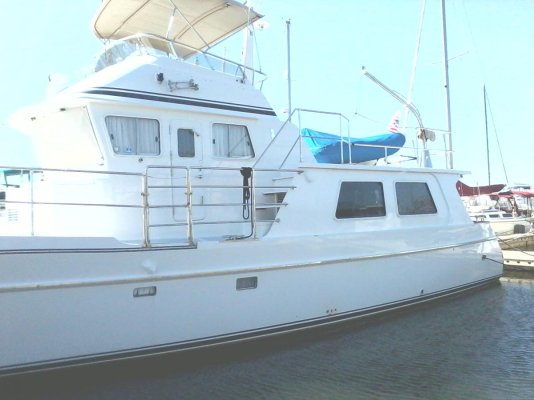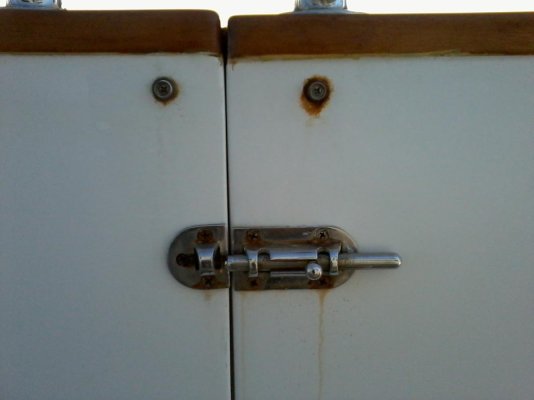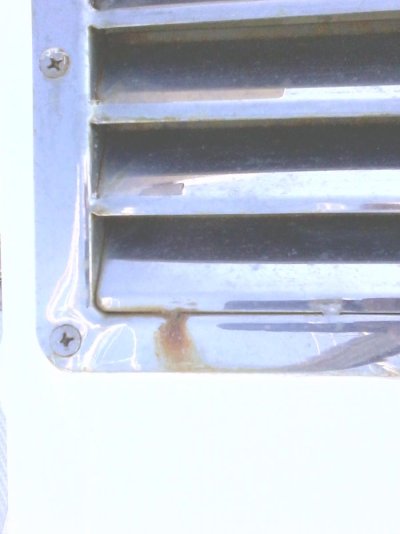Great post with lots of good points.

Let me start by stating that even though it might be a good idea and approach to sue in more complicated case, this one is just not worth the time and effort.
My main goal is to find the cause, so the resolution can be addressed for long term. I don't want to just keep cleaning/polishing these cheap SS parts every week or two.
I've had very good conversation with the dealer and here are few points:
We tried thinking outside the box and discussed few other possible reasons as contributors to the issue:
1. The dinghy being covered – my response: I can't see how the cover can cause the issue as the tow-hook at the bow is always exposed and not covered, but it has the same rusting issue.
2. Diesel exhaust fumes – my response: It's an interesting idea, but my SeaLift made from Stainless Steal and it doesn't have this issue. The lift is pretty much as old as the big boat (the boat is 2005) and only rusty stains I see from SS bolts, which most likely are lower grade SS.
3. Possibility of poor bonding/bedding allowing moisture build up behind the SS parts. But the dealer made a good point that some components can't be bedded (for example steering wheel), so perhaps this might not be part of the cause here. If it’s still a contributor, then it’ll address the issue only for some parts like cleats and tow hooks.
4. Possibility of some cleaning products stored in the dink. Dealer told me a story how one time an owner had very weird rusting issue, which was eating up the SS parts, I mean physically making the parts become week to the point of breaking. As a result, it was a chemical fumes reaction from some cleaning product stored inside the dink.
This is not the answer to my puzzle, as I don’t store any cleaning products in the dink. The only item that I could think of 1 gallon spare gas can. All other items have no way to generate any fume (I’m referring to PFDs, CG items, etc.)
5. Defective batch of parts - this is also a puzzling thing b/c dealer pointed out that parts like steering wheel, tow hooks, d-ring, cleats came from different vendor. But, it's yet to be confirmed and obviously all could have been switched to lower grade SS for saving money.
6. Boat location - This is another item which I have to rule out (at least for now) due to the fact that my boat is not tied to a specific location. She spent only couple of weeks (from the time the dinghy was loaded on the lift) in Toms River before she went on the summer journey in the range of CT to MA regions. Even though her temp summer base was Stamford CT, her presents there was very limited during summer months. So, the theory of some power plant contaminating the air in the area and affecting the SS on the dinghy doesn't make much sense in my case.
The biggest clue I can see is that the boat was in salt waters of LI/Block/RI/VY and other Sounds and Bays. IMO, all of this is pointing to poor quality of SS parts, which failed to resist the true marine environment.
The dealer is willing to help me out and he asked for time to do some homework and talk to some knowledgeable people (surveyors) to get their opinion on the possible causes.
I'll keep you guys posted with the findings.





